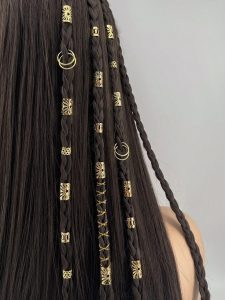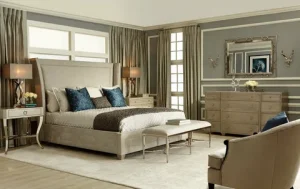To the untrained eye, estate jewelry may simply seem like secondhand bling. But for collectors, connoisseurs, and style-savvy shoppers, estate jewelry is a treasure trove of craftsmanship, culture, and timeless charm. It’s more than jewelry—it’s history you can hold.
In this article, we’ll explore what estate jewelry truly means, why collectors are obsessed with it, and how you can start your own collection. Whether you’re hunting down a rare Art Deco brooch or eyeing a Victorian locket with secret engravings, this is your definitive guide to estate jewelry—the collector’s dream.
What Is Estate Jewelry?
Estate jewelry refers to any piece of jewelry that has been previously owned. It may be antique, vintage, or contemporary—its defining characteristic is that it’s not brand new.
Let’s break it down:
- Antique Estate Jewelry: Over 100 years old (ex: Georgian, Victorian)
- Vintage Estate Jewelry: 20–99 years old (ex: Art Deco, Retro)
- Contemporary Estate Jewelry: Less than 20 years old but previously owned
These pieces may come from estate sales, auctions, private collections, or inheritance. Some are rare. Some are extravagant. But they all have a story—and that’s what makes them so irresistible.
Why Collectors Love Estate Jewelry
The collector’s passion for estate jewelry isn’t just about looks. Here’s what makes these pieces so desirable:
1. History in Your Hands
Each piece represents a moment in time—whether it’s a World War I-era sweetheart pin or a 1920s platinum ring that saw the Jazz Age. Jewelry like this connects us to real people, eras, and stories.
2. Masterful Craftsmanship
Estate pieces were often handmade or crafted in small batches, unlike today’s mass production. Expect intricate detailing, fine hand engraving, and forgotten gem cuts like rose-cut or old mine.
3. Investment Value
High-quality estate jewelry retains or increases in value over time, especially when made by sought-after designers like Cartier, Tiffany & Co., or Van Cleef & Arpels.
4. Sustainable Luxury
No new mining. No modern manufacturing waste. Estate jewelry is the eco-conscious collector’s dream.
5. Exclusivity
No one else will have the exact same piece. You’re not just buying jewelry—you’re buying something utterly unique.
Common Eras of Estate Jewelry and Their Appeal
Collectors often specialize by era, designer, or material. Here’s a tour through the most collectible eras of estate jewelry:
✦ Georgian Era (1714–1837)
- Handmade, often one-of-a-kind
- Rare and extremely collectible
- Features foil-backed gems, rose-cut diamonds, and elaborate gold work
✦ Victorian Era (1837–1901)
- Romantic symbolism: hearts, snakes, forget-me-nots
- Mourning jewelry and lockets were common
- Gold, garnets, seed pearls, and enamel
✦ Edwardian Era (1901–1915)
- Platinum became popular
- Delicate filigree and lace-like motifs
- Ideal for collectors who love elegance and precision
✦ Art Nouveau (1890–1910)
- Nature-inspired designs
- Flowing, asymmetrical lines
- Collectors seek enamel, opals, moonstones, and hand craftsmanship
✦ Art Deco (1920–1935)
- Bold geometry, symmetry, and color contrasts
- Platinum, diamonds, sapphires, onyx
- Highly collectible and still very fashionable
✦ Retro / Mid-Century (1940s–1960s)
- Hollywood glam, big cocktail rings, yellow and rose gold
- Colored stones like aquamarine and citrine
- Great for statement-loving collectors
Types of Estate Jewelry Collectors Love
Estate jewelry collectors don’t just look at age—they also focus on categories:
- Engagement rings: Old mine and cushion cuts are collector favorites
- Cameos & Lockets: Often with secret engravings or hidden compartments
- Brooches: Art Deco and Victorian brooches are making a comeback
- Bracelets & Bangles: Etruscan revival and Edwardian filigree designs are hot finds
- Earrings: Chandelier or drop styles from the Art Nouveau and Edwardian periods
Where to Find Collectible Estate Jewelry
Finding the perfect piece takes some sleuthing, but it’s half the fun. Top places to search include:
- Estate Auctions (Sotheby’s, Bonhams, Heritage Auctions)
- Specialty Antique Jewelry Dealers (both online and local)
- Jewelry Shows & Expos
- Online Marketplaces like 1stDibs, The RealReal, and Ruby Lane
- Family Heirlooms: The best pieces often come from your own history
Tips for Starting Your Collection
If you’re new to estate jewelry, start with these collector-approved steps:
- Educate Yourself – Learn about historical styles and materials
- Set a Budget – Quality estate jewelry can range from $200 to $200,000+
- Start Small – A Victorian locket or Art Deco ring is a great entry point
- Ask for Documentation – Appraisals, certificates, or provenance matter
- Buy What You Love – Value is great, but passion is better
Red Flags to Watch For
Collectors need to stay sharp. Watch out for:
- Modern reproductions passed off as antique
- Heavily damaged pieces that are hard to restore
- Frankenstein jewelry: pieces made from mismatched or repurposed parts
- No documentation or maker marks
When in doubt, get a second opinion from a gemologist or appraiser.
Estate Jewelry for Every Budget
Contrary to popular belief, not all estate jewelry is expensive. You can find real gold, diamonds, and antique pieces under $500—especially if you’re shopping smart.
Look for:
- Unusual but undervalued eras like mid-century
- Lesser-known designers
- Pieces with minor wear that can be restored
Final Thoughts: Own the Elegance, Keep the Story
Estate jewelry is a collector’s dream because it’s where beauty meets history. Every ring, bracelet, and brooch whispers a tale of its time—and now you get to continue that story.
Whether you’re collecting for investment, nostalgia, or pure joy, one thing’s for sure: estate jewelry is the kind of elegance you don’t just wear—you treasure.






